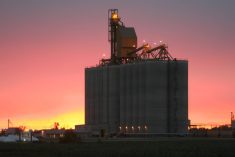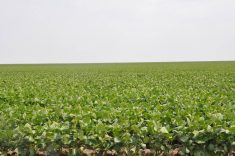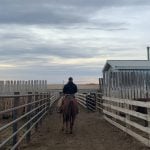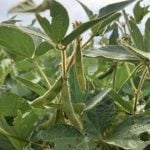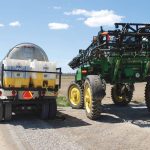A two-year study of air seeder openers at Alberta Agriculture’s Agricultural Technology Centre in Lethbridge has found that they all worked similarly well.
“All the openers were quite significantly different, so it’s pretty hard to compare them,” said Blaine Metzger, a project technologist who helped evaluate six openers of four types from four manufacturers.
“Each one of them works better than the others in certain conditions.”
The openers were installed on two of the research centre’s air seeders in the first year of the study and tried out under actual field conditions, covering 13 to 15 acres per opener in brown loam chernozem soil.
Read Also
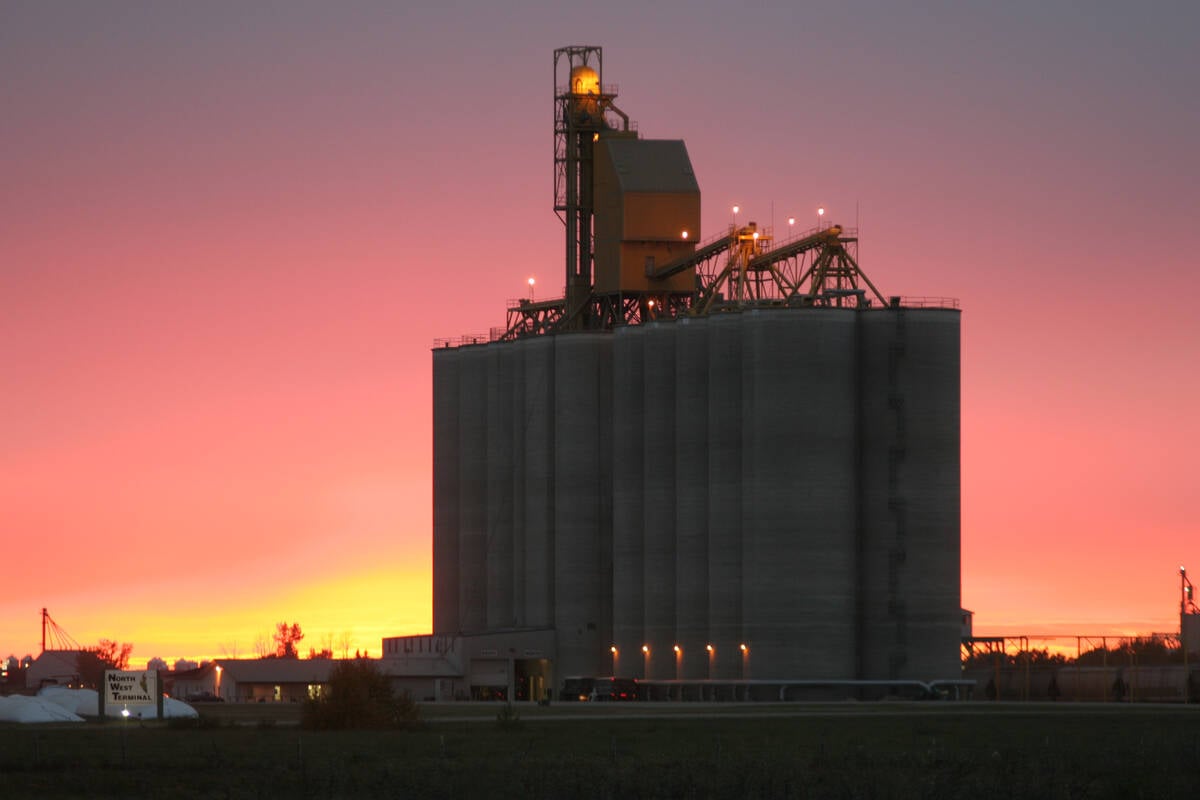
Bunge to acquire North West Terminal Ltd.
Bunge plans to buy the assets of North West Terminal in Unity, Sask.
The following year, the openers were taken indoors for testing on a specially designed cart, which allowed for measuring draft at 6.4 km-h at three operating depths.
Another test, this one at the Alberta Soil Bin Test Facility, used pot barley to simulate seed and fertilizer placement and examine the openers’ performance in terms of soil disturbance.
Relative draft for all units was considered in comparison with a 12 inch wide sweep opener, which typically rates 215 to 280 pounds at a depth of three to 3.5 inches.
Seed Master
Metzger said the Seed Master uses a hydraulic ram trip design that is becoming a new trend in openers. The double shoot, two shank-type opener with carbide tips has a residue deflector on the vertically adjustable front fertilizer shank.
It is normally sold as a complete air-drill system with frame. The air tank and material delivery system is sold as an option.
“It has a pressure-relief valve in the hydraulic line. As soon as it gets over a certain pressure, it causes it to trip,” Metzger said.
“Because all the openers are controlled independently, they are able to maintain a constant seeding and fertilizing depth in all the kinds of surface conditions that we tested.”
He said soil disturbance was low. Opener penetration was 79 mm, with depth range for seed at 23 to 32 mm and
35 to 40 mm for fertilizer. Furrow width at the surface was 135 mm.
Average draft was 150 to
333 lb. at 1.4 to 3.1 inches.
K-Hart 3612
The single-shoot, double disk opener uses an adjustable tension spring to force the disk into the soil, and the offset disks are followed by a spring-loaded rubber packer wheel. Seed and fertilizer placement accuracy was very good, which is typical with disk models.
However, like most disk openers, Metzger said, hard, dry soil or heavy trash cover could pose a problem with penetration.
“The way the lever action is on the trip, it didn’t have real heavy penetration,” Metzger said. “Conditions had to be a little more ideal for the opener to properly place
the seed.”
However, draft was much lighter because of the opener’s rolling ability.
With the tension spring set at maximum, disk penetration depth averaged 58 millimetres, with a seed-fertilizer depth range of 13 to 21 mm and an 89 mm furrow width.
Average draft was 68 to 150 lb. at one to
2.3 inches.
Dutch Low Draft Paired Row
A double shoot knife-type opener, this model places fertilizer at the same depth or slightly deeper than the seed. It has a front point with wings and spreader plate, main opener body and a fertilizer delivery tube.
To put fertilizer slightly lower than the seed, the front point has a burr on the underside, which creates a trench for it to fall into.
The point, with a carbide tip, has wings that create a wide soil furrow for both the seed rows. While three point sizes are available, only the 89 mm spread point was used in the study.
“It worked pretty well,” Metzger said.
“But like most openers with wider points, it did have a bit of problem with penetration in hard ground.”
Having wings on each side of the point tends to reduce penetration ability in extreme conditions, he added.
Seed and fertilizer placement was good, but variability and some mixing was noted. Penetration depth averaged 51 mm with a seed depth range of 19 to 32 mm and 22 to 38 mm for fertilizer. Average draft was 139 to 355 lb. at one to three inches.
K-Hart 2612 Double Disk
Similar to the K-Hart 3612 model, the 2612 features a parallel linkage trip system that puts downward force on the double disks. The unit tested was equipped with an optional residue manager, which is a spring-loaded, notched metal disk set at an angle that is designed to sweep trash out of the way of the opener.
With disk and packer springs set at medium tension, average disk penetration was 56 mm. Seed and fertilizer depth range was found to be 25 mm, and it left a 57 mm furrow width at the surface.
“The design of the parallel linkage gave it a lot more downward spring pressure on the disk so it had better penetration,”
Metzger said.
“The residue
manager created a little bit of disturbance, but it did clear stubble.”
Average draft was 86 to 172 lb. at one
to three inches.
Dutch Paired Row Opener
Like the Dutch Low Draft Paired Row model, the Dutch is a double shoot knife-type opener that is available in four sizes from 89 mm to 165 mm. The difference is that this model places the fertilizer below and between the paired seed rows.
With an extended carbide-tipped front point, the main opener body houses the fertilizer delivery tube and mounting bracket.
Two sizes of metal shims can be used to set different angles of attack. Only the 114 mm opener was tested.
“It worked better for penetration,” he said. “The separate fertilizer point has a lot better ability to penetrate.”
Opener depth was 63 mm with a seed depth range of six to 19 mm. Fertilizer depth range was 38 mm. Stubble clearance was good. The sealer plate made for a wide furrow but higher disturbance. Average draft was 174 to 526 lb. at two to five inches.
Gen 300 T2
A modification of an early Gen model, the new double shoot paired row knife-type opener mounts on a conventional C-shank.
The main opener body consists of a complete cast unit with two tubes at the rear for seed and fertilizer delivery, and a carbide-tipped point. Unlike its predecessor, the Gen 300 T2 places fertilizer between the two rows of seed at the same depth or slightly below. It offered excellent seed separation under all test conditions, Metzger said, with less than three percent mixing.
“The idea is lower draft. Because the earlier model banded the fertilizer so much deeper than the seed rows, it required a lot more penetration depth, which led to heavier draft.”
Opener penetration was 63 mm, with a depth range of 18 to 25 mm for seed and
23 to 32 mm for fertilizer.
The opener created medium soil disturbance, and the wing-tip design offered smooth soil flow over the opener. Stubble clearance was good. Average draft was 170 to 440 lb. at one to three inches.


